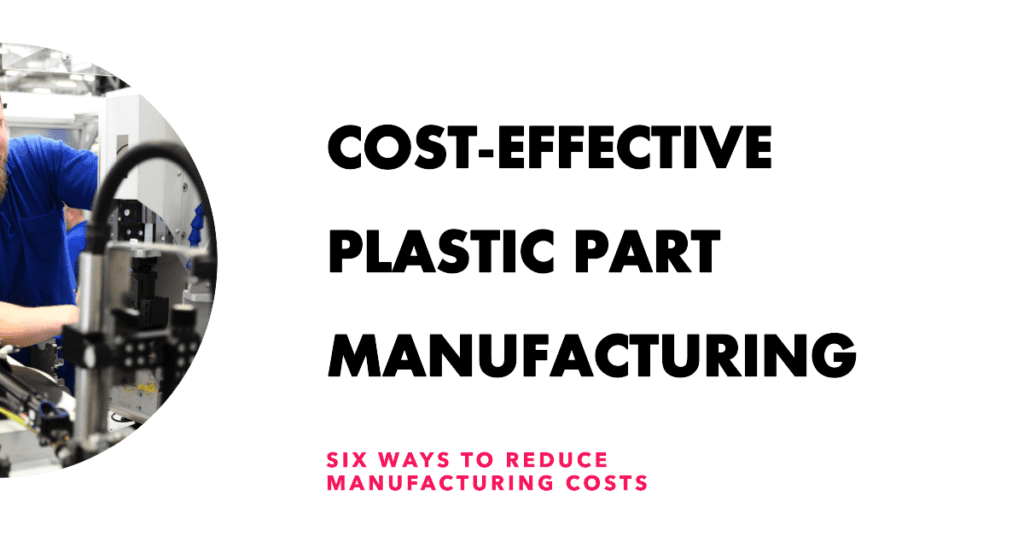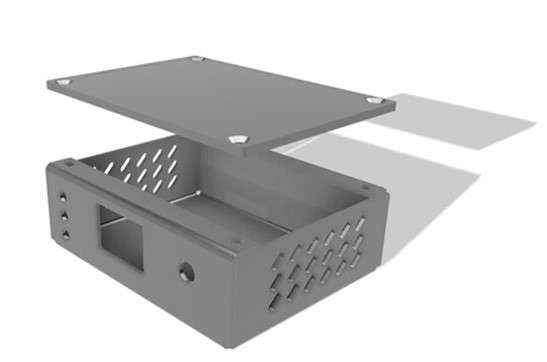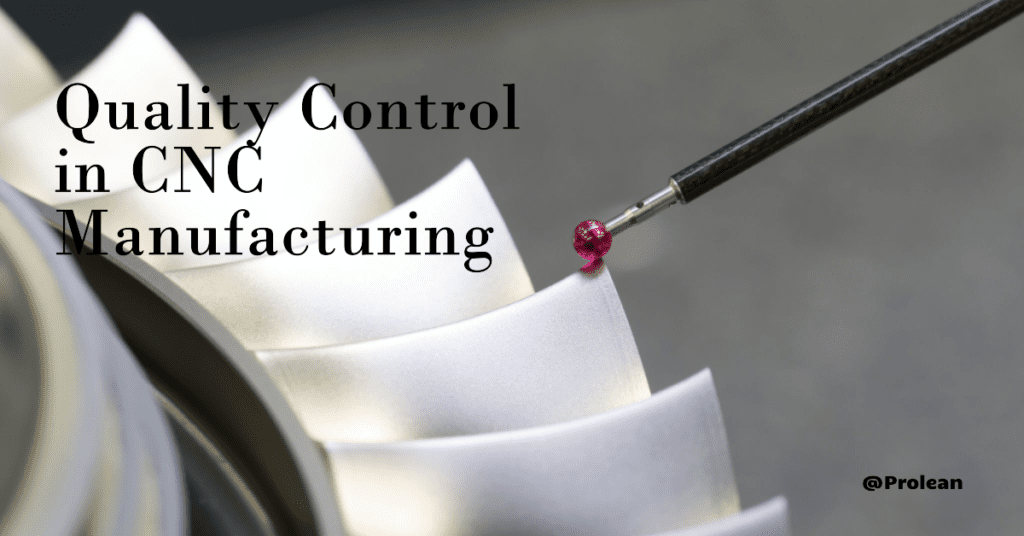
In today’s dynamic business environment, controlling costs is a fundamental strategy to maintain competitiveness and profitability. When it comes to the manufacturing of plastic parts, the concern about cost reduction becomes even more pronounced due to the intricacies of the process. But fret not! There are proven ways to reduce costs while maintaining the integrity and quality of the parts.
This comprehensive guide will introduce you to six highly effective strategies to minimize the manufacturing cost of plastic parts.
Related resource: CNC Machining: Plastic parts
Strategy 1: Streamline Your Design Process
A streamlined design process plays a significant role in reducing the manufacturing cost of plastic parts. The goal is to create a well-defined design that minimizes material waste, reduces the need for multiple reworks, and optimizes production. This strategy primarily hinges on using CAD software and implementing Design for Manufacturing (DFM) and Design for Assembly (DFA) principles.
1. Use of CAD Software

Computer-Aided Design (CAD) software has revolutionized the way we design parts, including those made from plastics. CAD software enables the creation of precise 3D models, which can be manipulated to optimize the design before manufacturing begins. This eliminates guesswork and reduces the likelihood of errors, thereby saving time and resources. A comprehensive CAD model also allows for simulation of the manufacturing process, further aiding in identifying potential issues that might increase costs.
Benefits of using CAD Software in the design process:
- Reduction of errors due to precision design.
- Time and cost saving by eliminating the need for physical prototypes.
- Enhances communication between designers, engineers, and manufacturers through visual representation.
2. Design for Manufacturing (DFM) and Design for Assembly (DFA)
DFM and DFA are design philosophies that aim to minimize complexity and therefore, reduce the manufacturing cost. DFM ensures the design is optimized for the chosen manufacturing process, minimizing material waste and maximizing production efficiency. DFA, on the other hand, simplifies the assembly process, reducing the time and cost of assembly.
Key principles of DFM and DFA:
- Minimize the number of parts to reduce assembly costs.
- Design parts to be multi-functional to eliminate the need for additional parts.
- Use standard parts whenever possible to reduce production costs.
By streamlining the design process through the use of CAD software and applying DFM and DFA principles, manufacturers can significantly reduce the production cost of plastic parts.
Strategy 2: Choose the Right Manufacturing Process
Choosing the right manufacturing process can significantly affect the overall cost of producing plastic parts. Depending on the part’s complexity, the desired finish, and production volume, some manufacturing processes may be more cost-effective than others.
1. Injection Molding vs. Blow Molding
Injection molding and blow molding are two commonly used manufacturing processes for plastic parts. Injection molding is ideal for producing complex, high-precision parts in large volumes. However, the initial setup cost can be high. Blow molding, on the other hand, is more suited for creating hollow parts like bottles and is less expensive in terms of initial investment but might not offer the same precision as injection molding.
2. Rotational Molding vs. Compression Molding
Rotational molding is a cost-effective method for producing large, hollow plastic parts. It offers a uniform wall thickness and is ideal for low to medium-volume production. Compression molding, on the other hand, is excellent for making large, fairly complex parts. It is a high-pressure molding process that can offer excellent dimensional stability, but the cycle times can be quite long, impacting the production rate.
Table 1: Comparison of Manufacturing Processes:
| Manufacturing Process | Ideal Use Case | Cost |
|---|---|---|
| Injection Molding | High-volume, complex parts | High initial cost, low per unit cost |
| Blow Molding | Hollow parts like bottles | Low initial cost, higher per unit cost |
| Rotational Molding | Large, hollow parts | Moderate cost, ideal for low to medium volume |
| Compression Molding | Large, fairly complex parts | High-pressure molding, long cycle time, cost-effective for large parts |
Strategy 3: Implement Efficient Material Usage
Reducing material waste is a critical factor in minimizing manufacturing costs. Several methods can be used to achieve this goal, including optimizing material usage in the design stage, recycling scraps and rejected parts, and using alternative materials where possible.
1. Optimizing Material Usage in Design
It begins with an efficient design that takes into consideration the amount of material that will be needed. Designs should aim to minimize cut-offs and scraps while still ensuring the structural integrity and functionality of the part. This can involve techniques such as nesting, where parts are arranged to use as much of the raw material as possible, and hollowing, where areas of a part that do not contribute to its strength or function are left hollow to save material.
2. Recycling Scraps and Rejected Parts
Even with efficient design, some amount of material waste is inevitable in any manufacturing process. However, many plastic materials can be recycled, reducing the cost of raw materials. Any scrap material or parts that are rejected for quality reasons can be ground down and reprocessed, turning what would have been waste into a valuable resource.
3. Using Alternative Materials
Sometimes, the best way to save on material costs is to use a less expensive material. If a part’s design allows, it might be possible to use a cheaper, lighter material without compromising the part’s function or durability.
Strategy 4: Optimize the Manufacturing Process
A well-optimized manufacturing process can greatly reduce the cost of producing plastic parts. This involves everything from the setup of the production line to the maintenance of the machinery.
1. Efficient Production Line Setup
The layout of the production line can have a significant impact on efficiency. Ideally, the flow of materials and parts through the process should be as smooth as possible, with minimal transportation and waiting times. This might involve arranging machines in a line or a circle, depending on the specifics of the manufacturing process.
2. Regular Maintenance of Machinery
Regular maintenance of the machinery used in the production process can prevent costly breakdowns and ensure that the process runs smoothly. This includes regular cleaning to prevent the build-up of materials that could cause problems, as well as regular checks and replacement of worn-out parts.
3. Use of Automation
Where possible, the use of automation can greatly increase efficiency and reduce costs. Automated machines can often produce parts more quickly and with greater consistency than human workers, leading to fewer mistakes and less waste.
By implementing these strategies, manufacturers can significantly reduce the cost of producing plastic parts, resulting in more competitive prices and higher profits.
Strategy 5: Prioritize Quality Control

Ensuring a high level of quality control can be an effective way to reduce manufacturing costs in the long run. While investing in quality control might increase costs in the short term, it can lead to significant savings by reducing the number of rejected parts and preventing the shipment of faulty products, which can lead to costly recalls or damage to the company’s reputation.
1. Implementing a Robust Inspection Process
An efficient quality control system begins with a robust inspection process. Every part should be inspected for defects or inconsistencies. This could involve visual inspection, measuring dimensions, or using more advanced techniques such as non-destructive testing (NDT).
2. Setting Clear Quality Standards
Clear quality standards should be set and communicated to all members of the production team. These standards should detail the acceptable tolerance levels for each aspect of the part, and any part that falls outside these tolerances should be rejected.
3. Investing in Training
Investing in training for staff members can improve the overall quality of the manufactured parts. This could include training on the use of machinery, how to inspect parts effectively, or how to handle and store materials to prevent damage.
Strategy 6: Utilize Just-in-Time (JIT) Manufacturing
The Just-in-Time (JIT) manufacturing strategy, a method that reduces times within the production system as well as response times from suppliers to customers, can be highly effective in reducing the cost of manufacturing plastic parts. This strategy revolves around efficiency, aiming to reduce the amount of inventory held by the company, thereby saving on storage and material costs.
1. Minimizing Inventory Costs
By only producing parts as they are needed, JIT manufacturing minimizes the amount of inventory that needs to be stored. This not only saves on storage costs but also reduces the risk of inventory obsolescence.
2. Reducing Material Waste
JIT manufacturing often involves producing smaller batches of parts more frequently, which can reduce material waste. If a defect is detected in a batch, fewer parts will be affected than if large batches were produced.
3. Increasing Efficiency
With JIT manufacturing, production processes are often streamlined and optimized, leading to greater efficiency. This can result in quicker production times and lower labor costs.
By implementing these six strategies, businesses can greatly reduce the cost of manufacturing plastic parts, helping them to stay competitive in the market.
Conclusion: The Importance of Cost Reduction in Plastic Part Manufacturing
In a world where cost efficiency is key to maintaining a competitive edge, adopting effective strategies to reduce the manufacturing cost of plastic parts is not just an option—it’s a necessity. By implementing the tactics discussed in this article, businesses can experience significant cost savings without sacrificing the quality or functionality of their products.
To recap, here are the key strategies covered:
- Streamlining your design process: Harness more efficient design software and consider the manufacturing process during the design phase.
- Choosing the right manufacturing process: Select the manufacturing method that best aligns with your product specifications and production scale.
- Investing in efficient machinery: Use state-of-the-art machinery to increase production speed and efficiency.
- Opting for bulk purchasing: Bulk buying of raw materials can lead to significant cost savings.
- Prioritizing quality control: A rigorous quality control system can reduce wastage and enhance product quality.
- Utilizing Just-in-Time (JIT) manufacturing: This strategy minimizes storage costs, reduces material waste, and increases overall efficiency.
Prolean’s on-demand manufacturing services embody these principles. We offer streamlined manufacturing processes and cost-effective solutions to ensure high-quality production at a competitive price point.
FAQs
Why is it essential to consider the manufacturing process during the design phase?
Designing with manufacturing in mind can help to reduce the complexity of the production process, reduce waste, and save on production costs.
What is Just-in-Time (JIT) manufacturing?
JIT manufacturing is a production strategy that aims to reduce the amount of inventory held by the company by producing parts as they are needed. This can save on storage costs and reduce material waste.
How can quality control help to reduce manufacturing costs?
Implementing robust quality control measures can reduce the number of defective parts produced, saving on material costs and preventing the shipment of faulty products, which can lead to expensive recalls and damage to the company’s reputation.
What are the benefits of using efficient machinery in the production process?
Efficient machinery can speed up the production process, reduce downtime, and improve the quality of the finished product, all of which can lead to cost savings.
Why is bulk purchasing beneficial in reducing manufacturing costs?
Bulk purchasing allows manufacturers to take advantage of economies of scale, resulting in lower costs per unit of raw material.




0 Comments